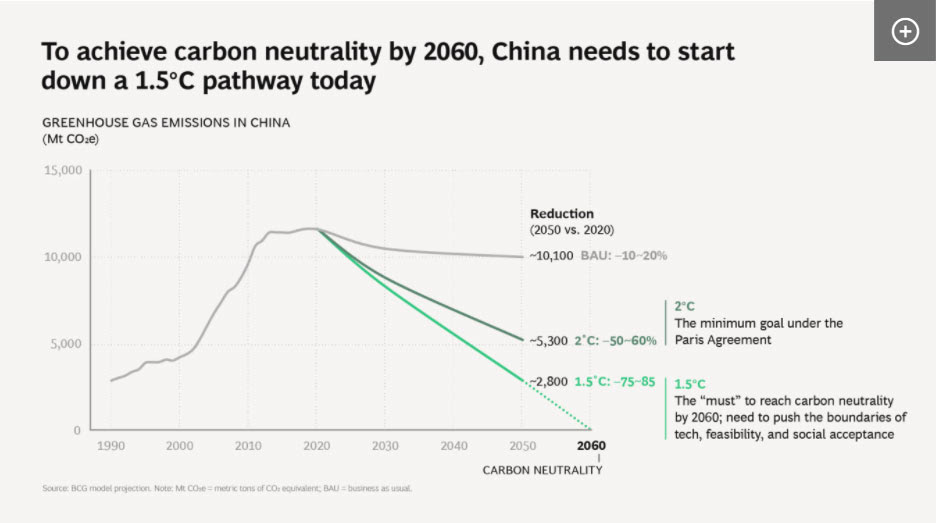BCG Weekly Brief: Can China Reach Its Bold New Climate Goals?

To BCG’s network around the world,
Happy new year. I hope you were able to enjoy a relaxing break—or will soon, for those in China. It’s been my routine for quite a while to start off the new year with a visit to China, checking in with our teams there, meeting with clients, and learning about the latest trends in a part of the world that has changed amazingly fast.
It’s disappointing not to be able to make that trip this year—especially at a time when there’s been great news from China about climate, a shift I think we should all feel encouraged by.
Last September, China announced a target of reaching carbon neutrality by 2060, aligning the country with the global goal of limiting warming to 1.5° C over this period.
Is it possible?
It’s going to be extremely difficult, but yes—China can reach this goal. BCG worked closely with the national Energy Research Institute, giving us access to sector-level emissions data within China. Through that collaboration, we found a pathway for China to follow, spelled out in a new report and slideshow. For starters, the country must act now to reach 75% to 85% carbon reduction by 2050.

China is the world’s largest annual carbon emitter (the US comes in a distant second). Several complex and challenging factors are behind this: the country’s reliance on nonrenewable energy, mostly coal; its large gaps in energy efficiency; and energy demand that has increased in recent decades at an incredible pace.
To meet its new goals, China will have to reduce roughly 50% of emissions by transitioning away from current energy sources, but other measures are equally important—including energy efficiency improvements as well as carbon capture and storage.
The effort will require a huge investment—$13.5 trillion to $15 trillion through 2050. But these investments can also be a major growth opportunity, contributing 2% to 3% to GDP over that period and increasing employment in the medium to long term. Plus, decreased pollution will save lives and reduce health care costs, among many other benefits.
As for all countries, however, getting there will take more than promises. If China is to follow through on these exciting aspirations, it must take decisive action, and soon—ideally embedded in the country’s upcoming five-year plan.
If China is successful, the goals of the Paris Agreement are within reach—especially if the US signs back on and step-changes its ambition, as President-elect Biden has promised. And China’s efforts should serve as inspiration and a source of innovation, as its influence is powerful across so many countries. I hope this effort also can create a broader opportunity for the US and China to work together, despite the contentiousness between the two countries on other topics.
China’s promise is very ambitious, but within reach. And it could help make an enormous difference in the world.
See below to read more about this and related issues. Until next week.
 |
Rich Lesser
Chief Executive Officer
| How China Can Achieve Carbon Neutrality by 2060Our simulation of China’s climate-change pathways shows that it has economically attractive and socially viable pathways to achieve its decarbonization goals.CLICK TO READ MORE |
| The China Growth Opportunity China’s dynamic economic growth will continue in the years ahead. Here’s what business leaders need to know. Beyond Science-Based Targets: A Blueprint for Corporate Action on Climate and Nature This paper introduces the Corporate Climate Mitigation Blueprint to cut through the noise and focus on the actions that underpin a truly effective corporate strategy. |





